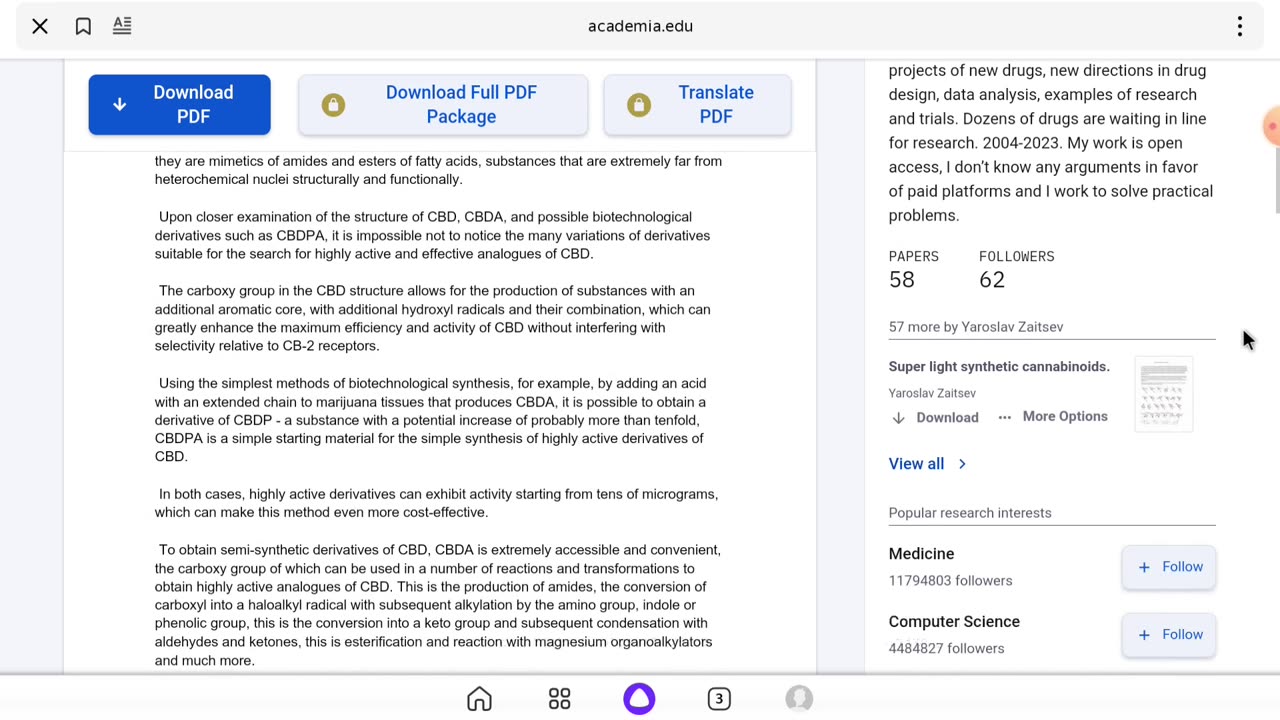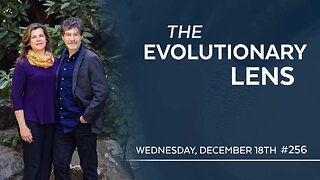Premium Only Content

CBD, highly active, pharmacological derivatives. Anti-cancer. Drug Design.
CBD, highly active, pharmacological derivatives.
Independent researcher Yaroslav Grigorievich Zaitsev 0000-0002-0069-2997
CBD derivatives are extremely rarely used to search for potential anti-cancer drugs.., giving
preference to synthetic, often poly-heterochemical compounds.
This is easy to explain, given the complexity and cost of synthesizing the simplest CBD
derivatives, the inconvenience of working with terpenes and, perhaps most importantly, an
insufficiently close look at the problems of drug design and pharmacological synthesis of
terpenes.
This work demonstrates the hidden potential of terpenes in pharmacology, organic
pharmacological synthesis, biotechnological synthesis and drug design. Sooner or later, the
use of terpenes, both natural and semi-synthetic and synthetic, will be realized, because
poly-heterochemical cannabinoids are initially a controversial decision, given the fact that
they are mimetics of amides and esters of fatty acids, substances that are extremely far from
heterochemical nuclei structurally and functionally.
Upon closer examination of the structure of CBD, CBDA, and possible biotechnological
derivatives such as CBDPA, it is impossible not to notice the many variations of derivatives
suitable for the search for highly active and effective analogues of CBD.
The carboxy group in the CBD structure allows for the production of substances with an
additional aromatic core, with additional hydroxyl radicals and their combination, which can
greatly enhance the maximum efficiency and activity of CBD without interfering with
selectivity relative to CB-2 receptors.
Using the simplest methods of biotechnological synthesis, for example, by adding an acid
with an extended chain to marijuana tissues that produces CBDA, it is possible to obtain a
derivative of CBDP - a substance with a potential increase of probably more than tenfold,
CBDPA is a simple starting material for the simple synthesis of highly active derivatives of
CBD.
In both cases, highly active derivatives can exhibit activity starting from tens of micrograms,
which can make this method even more cost-effective.
To obtain semi-synthetic derivatives of CBD, CBDA is extremely accessible and convenient,
the carboxy group of which can be used in a number of reactions and transformations to
obtain highly active analogues of CBD. This is the production of amides, the conversion of
carboxyl into a haloalkyl radical with subsequent alkylation by the amino group, indole or
phenolic group, this is the conversion into a keto group and subsequent condensation with
aldehydes and ketones, this is esterification and reaction with magnesium organoalkylators
and much more.
To obtain highly active (dosage starting from tens of micrograms per 100 kg of live weight)
derivatives of THC or CBD, it is enough to introduce minor changes to the structure, for
example, to increase the tail part and add several double bonds or their pharmacological
analogs to it, which is demonstrated by some existing derivatives of THC. Since in the work
we are talking about more serious changes, with the right drug design, activity and selectivity
can be at the maximum level. This is not an end in itself, but it is an important step in
obtaining more effective derivatives of CBD, because for a powerful anti-cancer effect, CB-2
receptors must experience a powerful, shocking and long-lasting effect.
The diagram shows some easy-to-obtain derivatives that can have high affinity and
selectivity for CB-2 receptors, including THC derivatives with additional hydroxyl groups: .. ... ... . .. ..
-
 2:04:11
2:04:11
Melonie Mac
5 hours agoGo Boom Live Ep 32! Soul Reaver Remastered!
25.4K6 -
 39:11
39:11
Sarah Westall
3 hours agoDigital Slavery and Playing with Fire: Money, Banking, and the Federal Reserve w/ Tom DiLorenzo
36.8K1 -
 1:38:38
1:38:38
2 MIKES LIVE
7 hours ago2 MIKES LIVE #157 ILLEGALS, PROTESTORS AND DRONES!
24K1 -
 1:01:03
1:01:03
LFA TV
1 day agoTHE LATEST SPENDING BILL IS AN ABOMINATION! | UNGOVERNED 12.18.24 5pm EST
28.7K33 -
 1:43:34
1:43:34
Redacted News
7 hours agoBREAKING! WARMONGERS PUSHING TRUMP TO LAUNCH PRE-EMPTIVE WAR WITH IRAN | Redacted News
134K232 -
 1:00:26
1:00:26
Candace Show Podcast
6 hours agoPiers Morgan x Candace Owens | Candace Ep 123
77.9K205 -
 2:06:51
2:06:51
Darkhorse Podcast
9 hours agoThe 256th Evolutionary Lens with Bret Weinstein and Heather Heying
59.3K26 -
 3:08:08
3:08:08
Scammer Payback
7 hours agoCalling Scammer Live
35.5K3 -
 1:21:25
1:21:25
Mally_Mouse
10 hours agoLet's Yap About It - LIVE!
83.6K9 -
 5:35
5:35
Cooking with Gruel
1 day agoMaking Fresh Salted Caramel
67.3K7